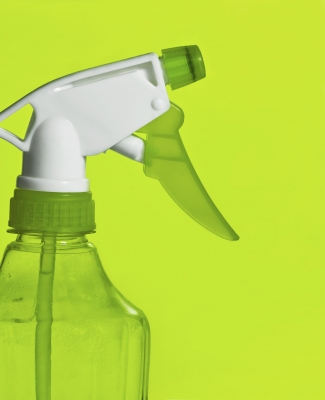 Our previous blog covered the basics of green cleaning, answering the question, “what is green cleaning?”. In part 2, we are delving further into green cleaning with an exploration of its importance.
Our previous blog covered the basics of green cleaning, answering the question, “what is green cleaning?”. In part 2, we are delving further into green cleaning with an exploration of its importance.
Indoor Air Quality and Health Risks
Green cleaning is a safer way to clean. Conventional cleaning products pollute the indoor air with harmful chemicals. Considering the amount of time that people spend indoors, the quality of our indoor air should be a primary concern.
Conventional cleaning products release Volatile Organic Compounds (VOCs), which linger in the air long after cleaning products are put away. The United States Environmental Protection Agency warns that many VOCs have short and long term adverse health effects. Chemicals found in these cleaning products include toxic carcinogens (involved in causing cancer), teratogens, neurotoxins, hormone disruptors, and others.
Cleaning products that use harmful chemicals, produce VOCs, and contribute to poor indoor air quality are linked to a large number of health issues. Allergies, skin rashes, cold symptoms, skin and eye irritation, and increased risk for those with asthma are some of the immediate effects. Long term health effects can involve damage to the liver, reproductive system, kidney, central nervous system, or the development of cancer.
Contributing to health problems through cleaning not only defeats the purpose, but is dangerous. Replacing cleaning products with their green counterparts is the only way to minimize these potentially devastating consequences.
Environmental Impact
Conventional cleaning products not only pose problems for our health, but for the environment as well. The chemicals used are hazardous, non-biodegradable, and have not been tested for effects on the environment.
Water ecosystems (which then affect the rest of the ecosystem) are particularly under attack. Chemicals get into water systems when we wash cleaning liquids down the drain. From there, some of the chemicals – for example, phosphates or alkylphenol ethoxylates (APEs) – do not break down into safe components.
APEs are known to have detrimental effects, and have been found in the endocrine systems of fish, mammals, and birds. VOCs inhibit plant growth. Phosphates spur algae overgrowth, which ultimately kills off fish and other organisms. The list goes on.
As we discussed in part 1, green cleaning products are made from sustainable, biodegradable, and non-toxic ingredients. They do not have these negative impacts on the health and stability of the environment.
Packaging matters too. Biodegradable, recycled materials that don’t create needless waste should be used.
Green cleaning is a commitment to safety, health, and the environment.
>> Sunshine has been dedicated to responsible green cleaning for over 10 years. We adhere to strict green cleaning guidelines through our Healthy High Performance Cleaning Program. To discuss implementing a green cleaning program in your building, please contact us.